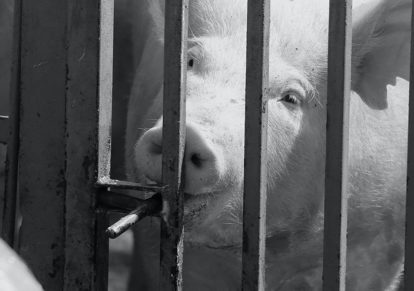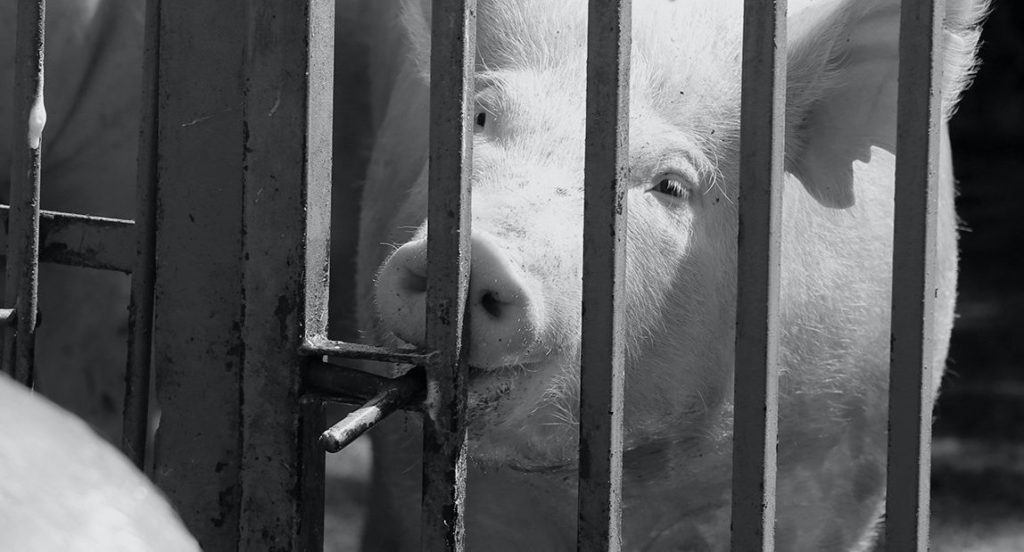Maintaining maximal stimulation
A live mature boar provides a large array of stimuli, among which the olfactory stimuli play
a major role in oestrus behaviour.¹
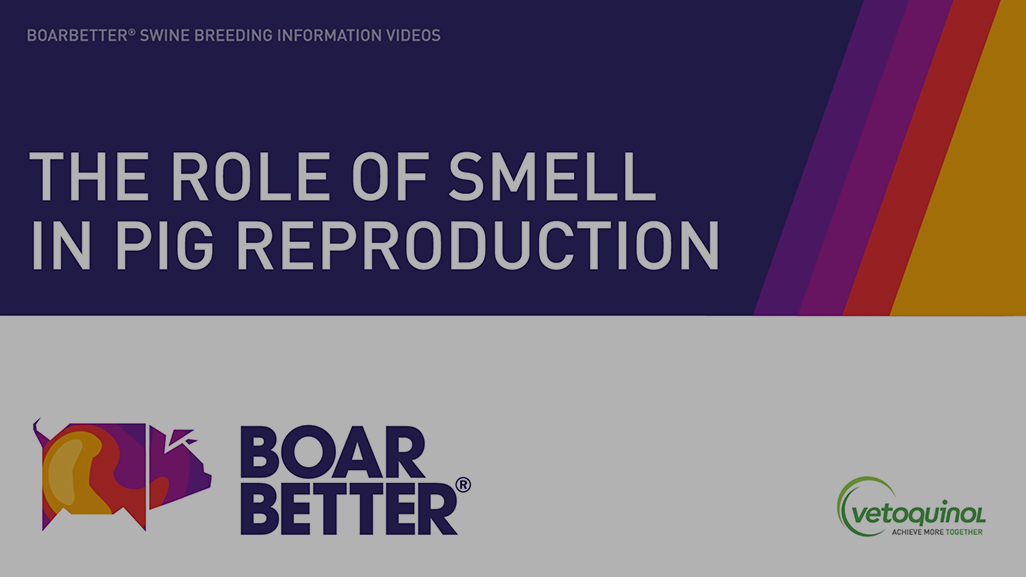
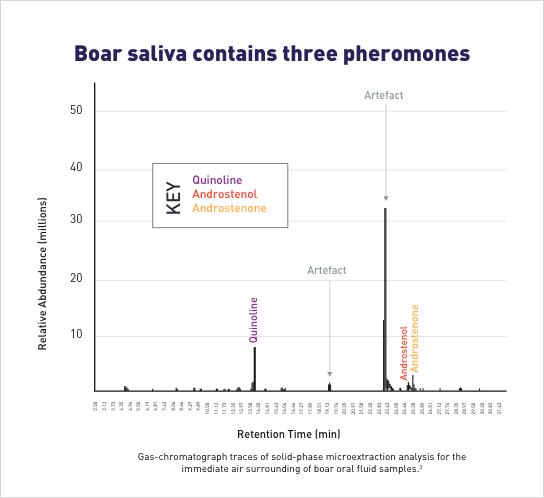
BOAR SALIVA – THREE PHEROMONES
A pheromone is an excreted chemical factor that triggers a social response in members of the same species.
For many decades, the signal from the boar’s olfactory molecules that elicits behavioural signs of oestrus in sows was thought to be only provided by two pheromones: Androstenol and Androstenone. Recent work has shown that a third volatile molecule named Quinoline is also present in boar saliva and shows a pheromonal effect that acts synergistically with Androstenol and Androstenone to achieve the maximal sexual behaviour in oestrus sows.²
THE OLFACTORY TRIGGER
The sexually mature boar emits three pheromone molecules in his saliva. These are transferred to the sow through close contact. The pheromones are transported to the main epithelial organ, a patch of sensory cells within the main nasal chamber, where they are recognized by specific receptors.

The olfactory sensory neurons transform chemical signals into an electrical signal which is rapidly conveyed to the central nervous system.
One given receptor specifically recognizes one given chemical structure. The maximal sexual message is conveyed to the brain if all three types of receptor is stimulated.
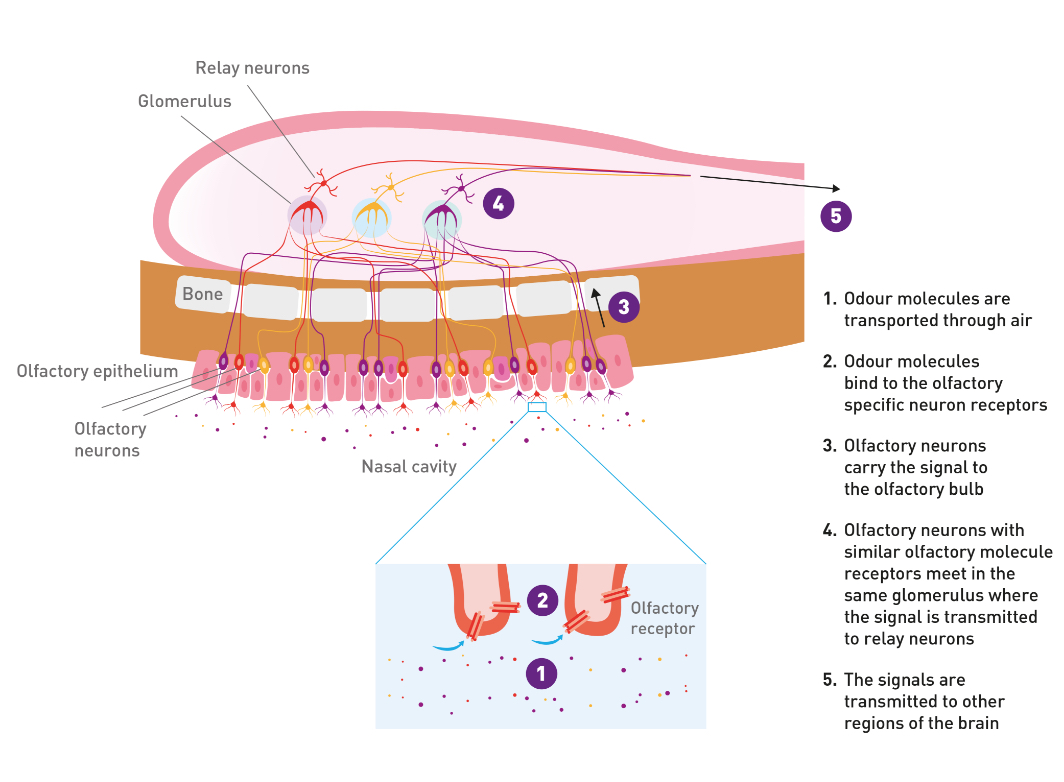
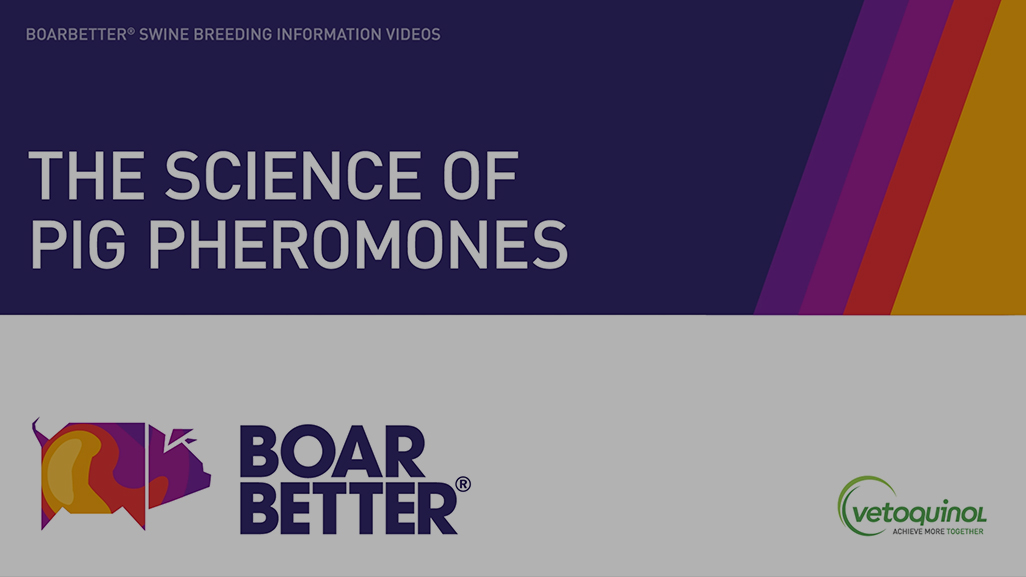
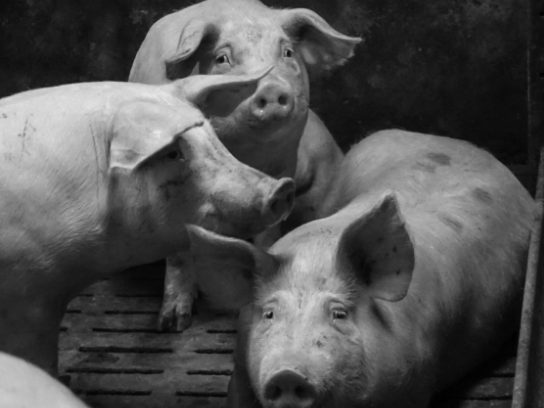
THE RISKS OF POOR HEAT DETECTION
Certain factors can affect the ability of the boar to deliver the sexual stimuli necessary for the female to display signs of oestrus – or for the female herself to respond to the presence of the boar. These risks can substantially affect the reproductive performance and profitability of the farm.
GO TO NEXT PAGE FOR MORE ON THE RISKS OF POOR HEAT DETECTION
REFERENCES: 1. Signoret & du Mesnil du Buisson. 1961. Etude du comportement de la truie en oestrus. IVth Congr. int. Reprod. Anim., La Haye, 171-5. 2. McGlone et al. 2019. A novel boar pheromone mixture induces sow estrus behaviors and reproductive success. Appl. Anim. Behav. Sci.;219:104832. 3. May Matthew. 2016. Use of solid-phase microextraction to detect semiochemicals in synthetic and biological systems. Master dissertation, Texas Tech University, 78p.
“There is no doubt about the heat after applying BoarBetter. Those who are in heat are locked up.”
M.S., Spanish Vet
“BoarBetter helps sows who are not reacting to the boar, by stimulating them to express their heat behaviour – enabling you to detect heat better across the sow batch.”
D.M., Spanish Vet
“BoarBetter helps make sows less restless, which makes insemination easier.”
V.C., Spanish Vet
“In my breeding management, I chose to use BoarBetter on all first parity after the boar has passed through. Detection is easier because the signs of heat are clearer.“
J.C., Farm Manager, France
“BoarBetter’s odour is very similar to strong-smelling search boars. The sows have a higher response with Boarbetter compared with a single commercial pheromone product. The best way to implement the use of Boarbetter in the daily routine might be a puzzle.“
Veterinarian, Netherland

